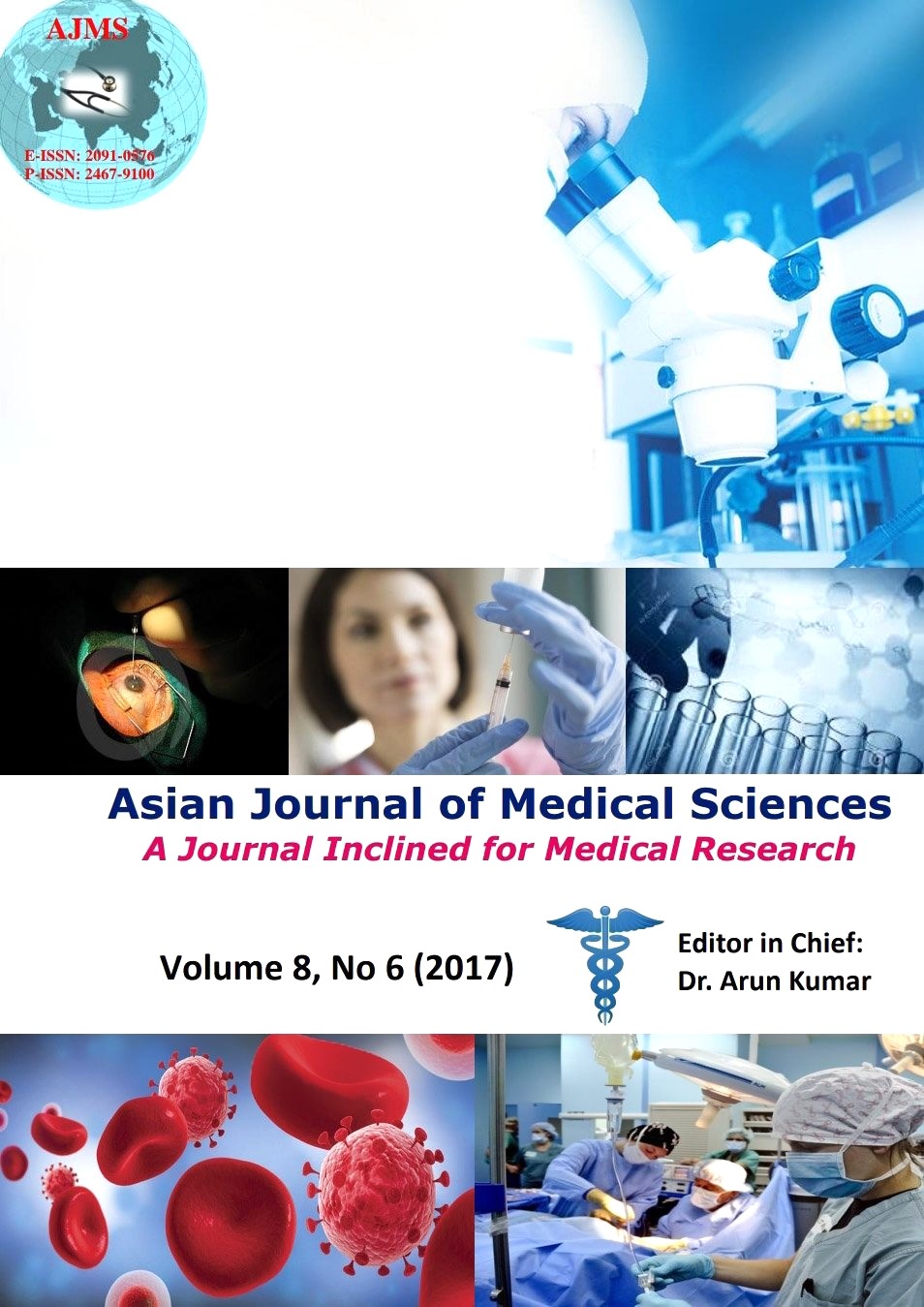Duchenne muscular dystrophy: A immunohistochemical profile and deletion pattern in dystrophin gene in North Indian population
Keywords:
Dystrophin, DMD, BMD, Multiplex PCR, Sarcoglycan, Dysferlin, MerosinAbstract
Background: Duchenne muscular dystrophy (DMD), one of the most common X linked muscular disorder, affecting 1 in 3500 male births and is caused by mutation in dystrophin gene. 65% of DMD cases are caused by large deletion of dystrophin gene, followed by duplication (5-10%) or point mutation (25-30%). There is wide mutation spectrum of the mutations in dystrophin gene. Hence, population specific information is needed on mutation spectrum and frequency of common mutations occurring in that particular population for appropriate counseling, prenatal diagnosis and for developing genetic therapy in future.
Aims and Objectives: To find out the frequency and distribution of deletion in dystrophin gene in DMD patients along with contribution of pathology and genetic testing in diagnosis of DMD and Becker muscular dystrophy (BMD) in North Indian population.
Materials and Methods: Dystrophin gene was screened for deletion by multiplex polymerase chain reaction (PCR). Out of 41 patients, 09 patients underwent muscle biopsy, on which immunohistochemistry was performed for dystrophin, sarcoglycan, dysferlin and merosin.
Results: Majority of the deletions were located in distal hotspot region (26/39 ~66.66%) which includes the exons 45-55 and 15.38% of deletions were located at the proximal hotspot region (2- 19 exons).
Conclusion: In the present study, 34% patients only showed deletion. Hence complete work up of any muscular dystrophy requires immnohistochemical analysis to see the expression of muscle proteins along with multipleplex PCR test to detect any exon deletion, multiplex ligation-dependent probe amplification (MLPA) to detect point mutation and duplication and western blotting to quantify the dystrophin protein.
Asian Journal of Medical Sciences Vol.8(6) 2017 13-18
Downloads
Downloads
Additional Files
Published
How to Cite
Issue
Section
License
Authors who publish with this journal agree to the following terms:
- The journal holds copyright and publishes the work under a Creative Commons CC-BY-NC license that permits use, distribution and reprduction in any medium, provided the original work is properly cited and is not used for commercial purposes. The journal should be recognised as the original publisher of this work.
- Authors are able to enter into separate, additional contractual arrangements for the non-exclusive distribution of the journal's published version of the work (e.g., post it to an institutional repository or publish it in a book), with an acknowledgement of its initial publication in this journal.
- Authors are permitted and encouraged to post their work online (e.g., in institutional repositories or on their website) prior to and during the submission process, as it can lead to productive exchanges, as well as earlier and greater citation of published work (See The Effect of Open Access).




